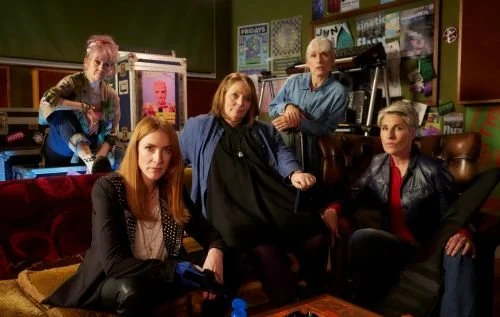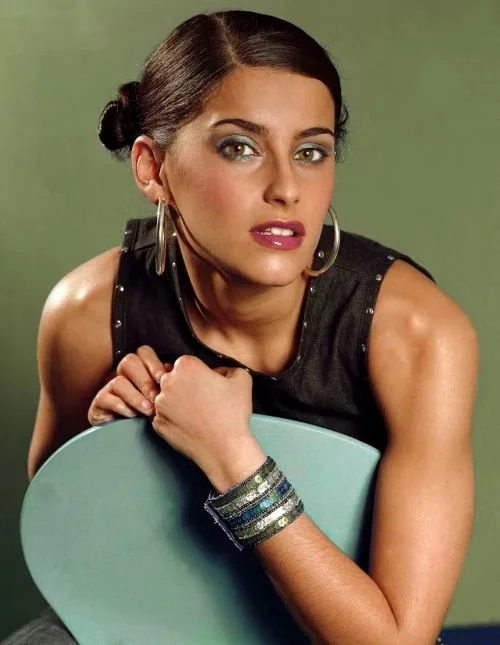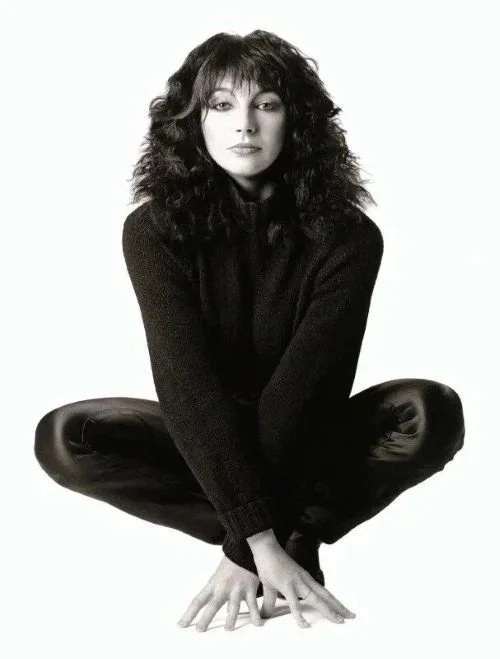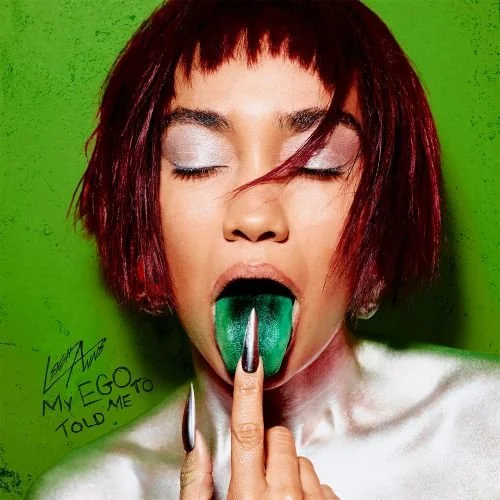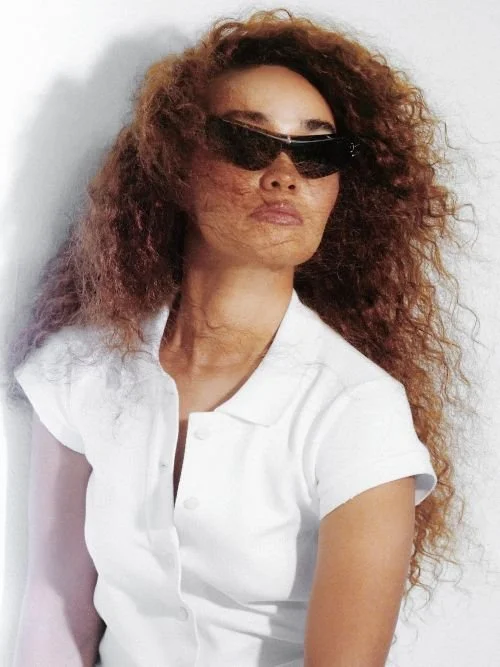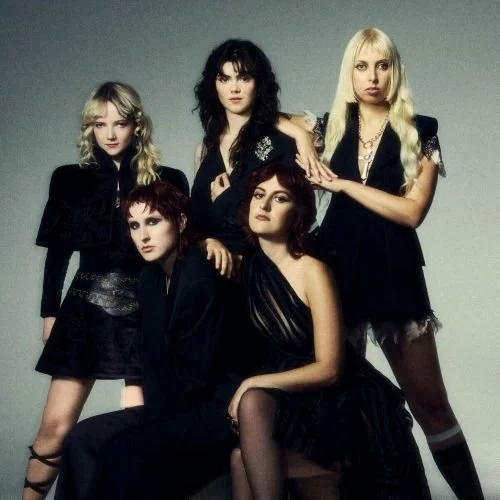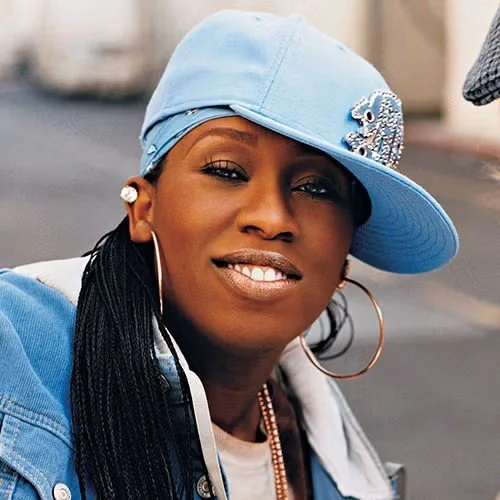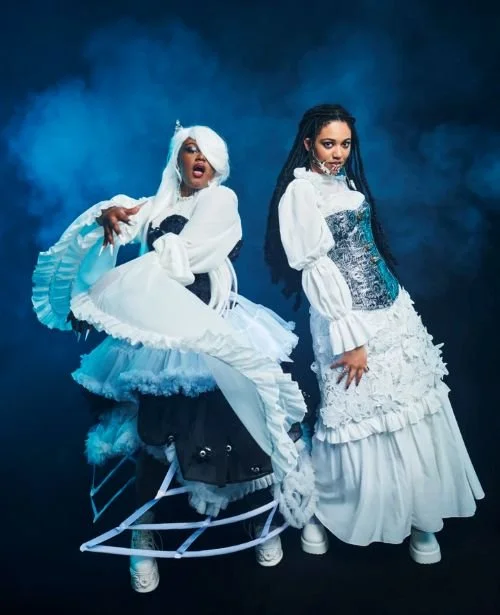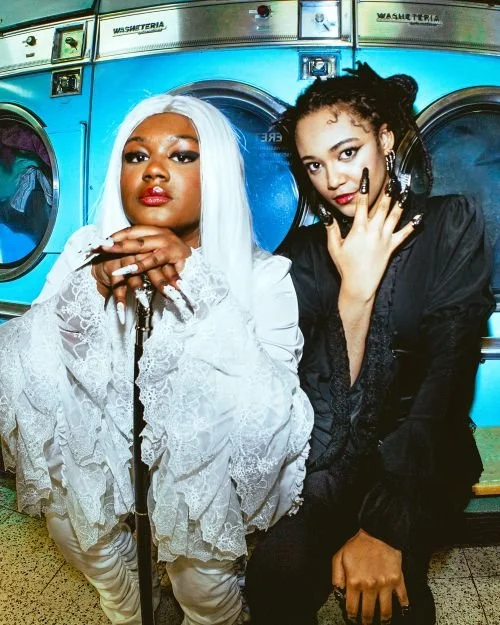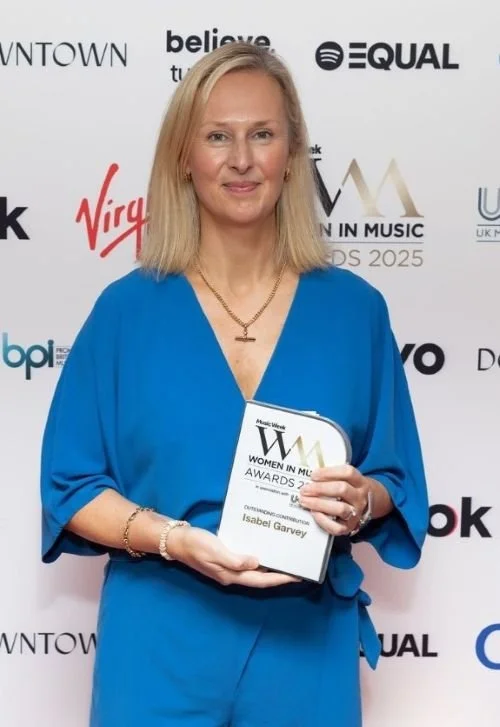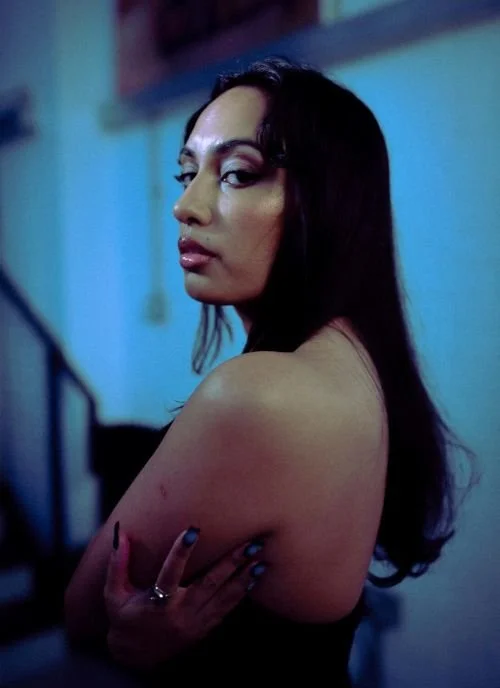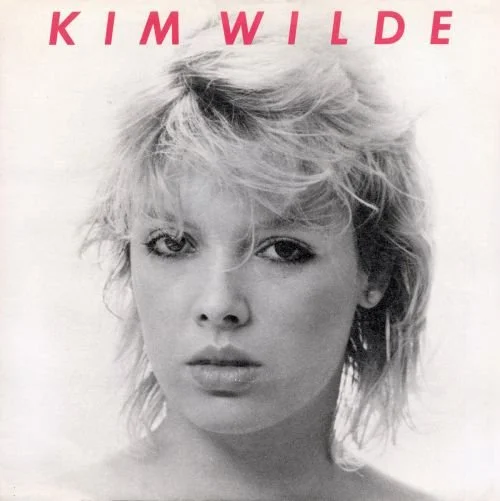FEATURE:
Behind That Locked Door
George Harrison's All Things Must Pass at Fifty-Five
__________
I have been writing a lot…
IN THIS PHOTO: George Harrison in 1970/PHOTO CREDIT: GAB Archive/Redferns via Guitar.com
about The Beatles this year and I am going to be again at least a couple of times. However, because George Harrison’s All Things Must Pass turns fifty-five at 27th November, I needed to spotlight this album. One of the finest Beatles solo albums. A lot of these songs were in his head and available during his Beatles career. I can imagine how keen he was to release these songs free from a band that was centred around on John Lennon and Paul McCartney. Released in the U.S. on 27th November, 1970, this was a huge album from Harrison. I am going to bring in some features about All Things Must Pass. However, I want to drop in some background information from Beatles Bible that caught my eye:
“George Harrison’s third solo album was his crowning glory. All Things Must Pass was a triple album, and his first release after the break-up of The Beatles.
The album contained the hit singles ‘My Sweet Lord’ and ‘What Is Life’, the Dylan collaboration ‘I’d Have You Anytime’, and a third disc of jam sessions titled Apple Jam.
All Things Must Pass saw Harrison transcend his Beatles status and established him briefly as the most successful former Beatle, with sales outstripping the likes of John Lennon’s Imagine, and Paul and Linda McCartney’s Ram. Harrison topped the US Billboard single and album charts simultaneously, a feat not equalled by his former bandmates until McCartney and Wings did so in June 1973.
Cast and crew
All Things Must Pass featured an extensive list of collaborators, including Ringo Starr, Eric Clapton, Billy Preston, Badfinger, Klaus Voormann, saxophonist Bobby Keys, and drummers/percussionists Alan White, Jim Gordon, Ginger Baker, and Phil Collins.
It was produced by Phil Spector, the maverick American then most famous for his Wall of Sound technique. Spector’s tendency to mass-record instruments and smother them in echo was his trademark, but several of the All Things Must Pass songs were overproduced. Remastered versions were released in 2001, 2010, and 2014, but a remixed version is yet to be issued.
On 27 January 1970 Spector had produced Plastic Ono Band’s single ‘Instant Karma!’, which featured Harrison on acoustic guitar. The producer was brought in again to remix The Beatles’ Let It Be recordings in March and April 1970, which helped convince both Harrison and Lennon to sign him up to produce their respective next solo albums.
Harrison was finding his own feet as a producer. From April to July 1969 he co-produced Billy Preston’s fourth studio album That’s The Way God Planned It, a mix of gospel, soul and rock. Harrison also co-produced the following year’s Encouraging Words. Released in September 1970, two months before All Things Must Pass, Encouraging Words contained versions of the songs ‘All Things Must Pass’ and ‘My Sweet Lord’. In addition to bolstering his skills as a producer, working on Preston’s albums helped Harrison understand the structure and composition of gospel music, and its expression of spiritual love and devotion.
Harrison and Preston had also worked together on soul singer Doris Troy’s eponymous album, released by Apple Records in 1970, for which Harrison co-wrote many of the songs.
I think he had been involved in soul music for years – he listened to it, he loved it, and that’s what made him want to do it. I wasn’t actually introducing him to the stuff, he already knew it. The Beatles as a whole listened to black music, a lot of their soul and feelings came from American music.
Doris Troy
While My Guitar Gently Weeps, Simon Leng
In April 1970 Harrison was in New York City, where he visited Bob Dylan, then recording New Morning at Columbia Studio B. Harrison performed uncredited on ‘Went To See The Gypsy’, ‘Day Of The Locusts’, and ‘If Not For You’, and jammed with the studio musicians on a number of songs including The Beatles’ ‘Yesterday’”.
I will end with a review from Pitchfork. This is an album that arrived at a strange time. In 1970, The Beatles were broken up and the members were releasing their own albums. John Lennon/Plastic Ono Band came out in December 1970. Paul McCartney’s McCartney came out in April of that year. He was attacked and criticised for releasing a solo album and was blamed for breaking up the band. With all of this tension, it must have been a combination of tense and freeing for George Harrison. Able to release a new album without being in the band and negotiating that. Ringo Starr released Sentimental Journey in 1970. Each member releasing an album that year. George Harrison made the biggest statement. Ultimate Classic Rock looked at All Things Must Pass in 2023:
“George Harrison Was Stifled in the Beatles' Later Years
It's no secret that Harrison's later years in the Beatles was frustrating for him as an artist. As the youngest member of the band, he started songwriting later than Lennon and McCartney. Then, eager to expand his contributions to the group's albums, he would write and submit songs to his bandmates for consideration. But by the time Beatlemania had peaked, Lennon and McCartney pretty much controlled the band's records, duly allotting a song each to Harrison and Starr to sing on the albums.
But unlike the drummer (who was never comfortable in the spotlight, and, until the end, often just sang a cover or a number given to him by Lennon and McCartney as an obligation), Harrison was writing more and more songs. By the time the members basically split into four solo artists with the other members of the group as backing bands on the White Album, the Quiet Beatle was no longer keeping quiet.
One of his songs, "Not Guilty," was pulled from the record at the last minute, and his contributions to Abbey Road – "Something" and "Here Comes the Sun" – were among the best on the Beatles' final recording together. But he was still treated as a second-tier member.
Who Did George Harrison Recruit for 'All Things Must Pass'?
When Harrison started putting together All Things Must Pass in May 1970 – gathering songs originally written for the Beatles – he was ready to unload years' worth of frustration. He poured almost everything he had into the album, turning his first real solo work into a sprawling, triple-record set that included jams, sketches, fragments and a long list of friends like Starr, Eric Clapton, Bobby Keys, Dave Mason and Ginger Baker.
Working with producer Phil Spector (who helped assemble the Beatles' disastrous sessions that ended up on Let It Be), Harrison reworked many of the best songs his old group had rejected, including "My Sweet Lord," "What Is Life," "Isn't It a Pity" and the title track, and wrote some new ones for the project. And he hosted a jam session with his famous friends that filled the entire third record of the set.
It was and remains an astonishing album, the first truly great one by a former Beatle. Harrison was also the first to reach No. 1 on the Billboard singles chart as a solo artist with "My Sweet Lord," which later was the center of a lawsuit involving the Chiffons' 1962 girl-group chart-topper "He's So Fine" and charges of plagiarism. (Harrison lost the case, but that takes nothing away from the song's greatness.)
And if it occasionally seems like Harrison gets a little lost along the way, or loses a grip on some of the unstructured jam tracks, it's all part of All Things Must Pass' lasting appeal. It's a self-indulgent work at times, certainly, but it's also a shot at Lennon and McCartney, who routinely passed on his songs for their own on Beatles albums. It's certainly a better record than McCartney, and it nearly tops the cathartic John Lennon/Plastic Ono Band.
It was a bigger album than both of them too, staying at No. 1 for seven weeks, which had to feel like some sort of vindication for the neglected Beatle.
But most of all, the album served as Harrison's separation from the Beatles and their legend. All of their early solo albums, in some way, were about breaking with the past, but All Things Must Pass was more so, establishing Harrison as the thoughtful, spiritual and inquisitive one. He finally got his chance to speak here, and he did so loud and clear. All these years later, that voice still resonates”.
I want to move to this feature from 2022. Even though this was not George Harrison’s first album, it was his first after The Beatles broke up. It is remarkable how ambitious and brave the album is. Harrison not holding anything back at all. No wonder that it is seen as one of the greatest albums ever. Fifty-five years after its release and it still sounds exceptional. All Things Must Pass is a wide-ranging and hugely impressive masterpiece that everyone needs to hear. I hope there are new anniversary feature written about it:
“The sound of All Things Must Pass is so huge that at times it is hard to be precise as to who appears on which track. Aside from the musicians already mentioned there’s Ringo Starr, Billy Preston, an uncredited Peter Frampton, and German bassist Klaus Voormann, who also did the artwork for the cover of The Beatles’ Revolver album. Members of Apple band, Badfinger, on acoustic guitars, also helped to create the wall of sound effect. On keyboards, there’s Bobby Whitlock, and Gary Wright, who had been a member of Spooky Tooth and later in the 1970s had considerable solo success in America. Other keyboard players included Tony Ashton and John Barham, who both played on Wonderwall Music.
The drummers are future Yes man, and member of the Plastic Ono Band, Alan White; Phil Collins, in his young, pre-Genesis days plays congas; and Ginger Baker plays on the jam, “I Remember Jeep.” Other musicians included Nashville pedal steel player Pete Drake and Procol Harum’s Gary Brooker.
Eric Clapton, Bobby Whitlock, Jim Gordon, and Carl Radle played London’s Lyceum in the Strand on Sunday June 14, 1970 and decided, shortly before going on stage, to call themselves Derek and The Dominos. Earlier in the day, they were at Abbey Road for an All Things Must Pass session when they cut “Tell The Truth,” which became Derek and The Dominos’ first single release in September 1970. The B-side was “Roll It Over,” recorded at another All Things Must Pass session on June 25, and this included George, along with Dave Mason on guitar and vocals.
Originally, Harrison had thought it would take just two months to record the album, but in the end, sessions lasted for five months, and were not finished until late October. George’s mother was ill with cancer during the recording and this necessitated his frequent trips to Liverpool to see her; she passed away in July 1970.
As a producer, Phil Spector proved somewhat unreliable, which led to George doing much of the production work himself. Final mixing of the record started at the very end of October in New York City with Spector. George was not entirely happy with what the famed producer did, yet nothing can take away from the brilliance of this record. Tom Wilkes designed the box to hold the three LPs and Barry Feinstein took the iconic photos of George and the four garden gnomes on the lawns in front of Friar Park.
Captivated audiences everywhere
When recording began it was scheduled for release in October, but the delays meant it came out in America on November 27 1970, and three days later in the UK. It was the first triple album by a single artist and captivated audiences everywhere, entering the Billboard album chart on December 19, going on to spend seven weeks at No.1 in America, from the first chart of 1971. It entered the UK on the Boxing Day chart, making No.4 on the official listings, though it topped the NME’s chart for seven weeks. As the lead single from the album, “My Sweet Lord” topped the bestsellers list on both sides of the Atlantic.
As time passes, admirers have come to love this amazing record even more. It is the kind of album that says so much about what made music so vital as the 1960s became the 1970s. It’s full of great songs with lyrics that not only meant something then, but still resonate today. As decades arrive and pass, and new generations of music lovers look back, this is the kind of work that will take on almost mythical status. It’s one thing being able to read about its making, it’s quite another thing to allow it to envelop you, to caress you and to make you feel the world is a better place in which to live”.
I will end with a review from Pitchfork. In 2016, they took us deep inside such an important album. George Harrison reinventing and reshaping what an album could be. It goes to show what could have been if his songwriting was perhaps taken more seriously and got more love when he was in the Beatles. Anyone who has never heard All Things Must Pass should listen to it now:
“Given his own studio, his own canvas, and his own space, Harrison did what no other solo Beatle did: He changed the terms of what an album could be. Rock historians mark All Things Must Pass as the first “true” triple album in rock history, meaning three LPs of original, unreleased material; the Woodstock concert LP, released six months before, is its only only spoiler antecedent. But in the cultural imagination, it is the first triple album, the first one released as a pointed statement. With its grave, formidable spine, it’s symbolically freighted photo of Harrison in the country, pointedly surrounded by three toppled garden gnomes, it still sits like a leather-bound book, a pop-music King James Bible on any shelf of records it occupies. It is one of the first such objects in pop music history, the unwieldy triple album that spilled out oceans of black vinyl, printed thousands of sheets of lyrics, traversed multiple sides and made you get up and sit back down again five times, walking half a mile between your couch and your stereo to experience it all. It was the heaviest and the most consequential Beatles solo album, the first object from the Beatles fallout to plummet from the sky and land with a clunk in a generation of living rooms. It is a paean to having too much ambition, too much to say, to fit into a confined space, and for this reason alone it remains one of the most important capital-A Albums of all time.
It was also massively popular, despite its hefty retail tag; All Things Must Pass spent seven weeks at No. 1, and its’ lead single, “My Sweet Lord,” occupied the same slot on the singles chart, marking the first time a solo Beatle had occupied both spots. The success was sweet vindication for Harrison; his triumph was so resounding that his former partners could not pretend to ignore it. “Every time I turn on the radio, it’s ‘Oh my lord,’” John Lennon joked dryly to Rolling Stone. Rumors have it that John and Paul reacted with chagrin at hearing the bounty of material spilling forth on the album, finally grasping the depth of talent they had been slow to recognize. Their solo albums would be considered successes to various degrees, in their own ways, but only George had the wind of true surprise at his back.
All Things Must Pass had the quality of a broken-off conversation picked up years later; there were gorgeous songs here that Harrison had brought to the group, only to be met with to varying degrees of indifference. “Isn’t It a Pity” had been rejected from Revolver, while “All Things Must Pass” was passed over for Abbey Road. In hindsight, it is impossible to imagine these songs having half the impact if they had appeared sandwiched between, say, “Don’t Pass Me By” and “Why Don’t We Do It in the Road.” Taken together, they have their own cumulative weight and depth; you can even imagine their demos perhaps sounding too patient or too plodding to the other three. Reviewing it in Rolling Stone at the time, Ben Gerson compared it to the Germanic Romanticism of Bruckner or Wagner, composers who were unafraid of risking a little ponderousness to reach grandiose heights. Harrison might have been nursing resentments, but his former bandmates did him a perverse favor by leaving him with this material: This is music of contented solitude, and it only makes sense by itself.
Besides John, George was the only Beatle unafraid of writing from anger or negativity—his early Beatles tunes, like “Think For Yourself” and “Taxman” are almost startling in their bile. But where John thrashed and sometimes wallowed, George gently explored; when John Lennon pounded his fist, hollering that he was “sick and tired of hearing things from uptight, short-sighted, narrow-minded hypocrites,” George simply noted it was a “pity” that “not too many people/ Can see we’re all the same.” The biting “Wah-Wah,” produced by Phil Spector and layered with so many different guitar tracks it feels like three guitar rock songs fighting each other, is possibly Harrison’s most pointed missive as a solo artist, addressed to his increasingly alienated former bandmates. But even here he seems more bemused than pissed-off; the swoop and dip of the melodies and antic main riff resemble chuckling rather than shouting, and the most resonant lyric (“And I know how sweet life can be/ If I keep myself free”) is the sound of a tentative soul allowing himself a measured yawp of freedom, however provisional and careful.
Sometimes, it seems as if the Beatles invented everything worth knowing about pop recordings. The process of making them, the process of venerating them, the idea that albums could be Ahab-like pursuits swallowing their creators nearly whole: We carry these notions in our heads because the Beatles put them there. With its sheer size and heft and gravitational pull, All Things Must Pass reinforced that the album could be an epic novel for a different sort of age. Today, “albums” exist largely as ideas rather than objects, shadow puppets we throw up against the wall to remind ourselves of the forms they represent. The language of physical media still haunts our vocabulary. Streaming services debut playlists that get dubbed “mixtapes”; we pull music from the available air and pipe them through our phones like water from a tap, and we still call use quaint words like “LP” and “EP” to describe them. For that legacy, we have artifacts like All Things Must Pass to thank. Today, albums like this are a bit like old ruins: They are important to keep around, even if they mostly remind us of what has changed. This dichotomy is the kind of thing that Harrison, who exited the earth in 2001, would probably have appreciated. All Things Must Pass is a monument to impermanence that has never once, even for a moment, left us”.
On 27th November, George Harrison’s All Things Must Pass turns fifty-five. Hugely acclaimed and a number one success around the world, including the U.S. and U.K., I want to finish off discussing the legacy of All Things Must Pass. How influential and important it is. Wikipedia’s useful article gives us a glimpse into the stature and legacy of All Things Must Pass:
“Among Harrison's biographers, Simon Leng views All Things Must Pass as a "paradox of an album": as eager as Harrison was to break free from his identity as a Beatle, Leng suggests, many of the songs document the "Kafkaesque chain of events" of life within the band and so added to the "mythologized history" he was looking to escape. Ian Inglis notes 1970's place in an era marking "the new supremacy of the singer-songwriter", through such memorable albums as Simon & Garfunkel's Bridge Over Troubled Water, Neil Young's After the Gold Rush, Van Morrison's Moondance and Joni Mitchell's Ladies of the Canyon, but that none of these "possessed the startling impact" of All Things Must Pass. Harrison's triple album, Inglis writes, "[would] elevate 'the third Beatle' into a position that, for a time at least, comfortably eclipsed that of his former bandmates".
Writing for Spectrum Culture, Kevin Korber describes the album as a celebration of "the power that music and art can have if we are free to create it and experience it on our own terms", and therefore "perhaps the greatest thing to come out of the breakup of the Beatles". Jim Irvin considers it to be "a sharper clutch of songs than Imagine, more individual than Band on the Run" and concludes, "It's hard to think of many bigger-hearted, more human and more welcoming records than this”.
Such a perfect album from one of the all-time great songwriters, I know there will be new celebration and inspection of All Things Must Pass on 27th November. Such incredible songwriting throughout, few could release a triple album and make it as consistent as George Harrison. No real filler at all! That is a huge and rare achievement. All Things Must Pass is an album…
WITHOUT fault.















